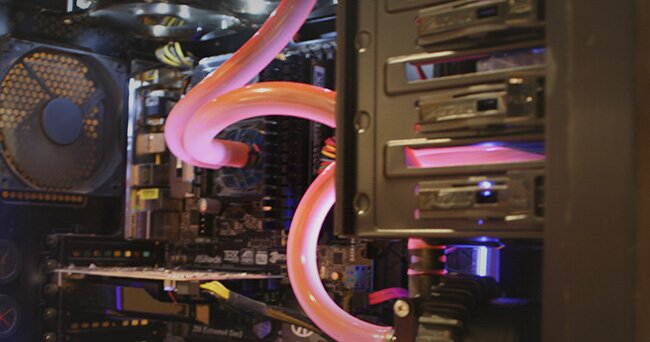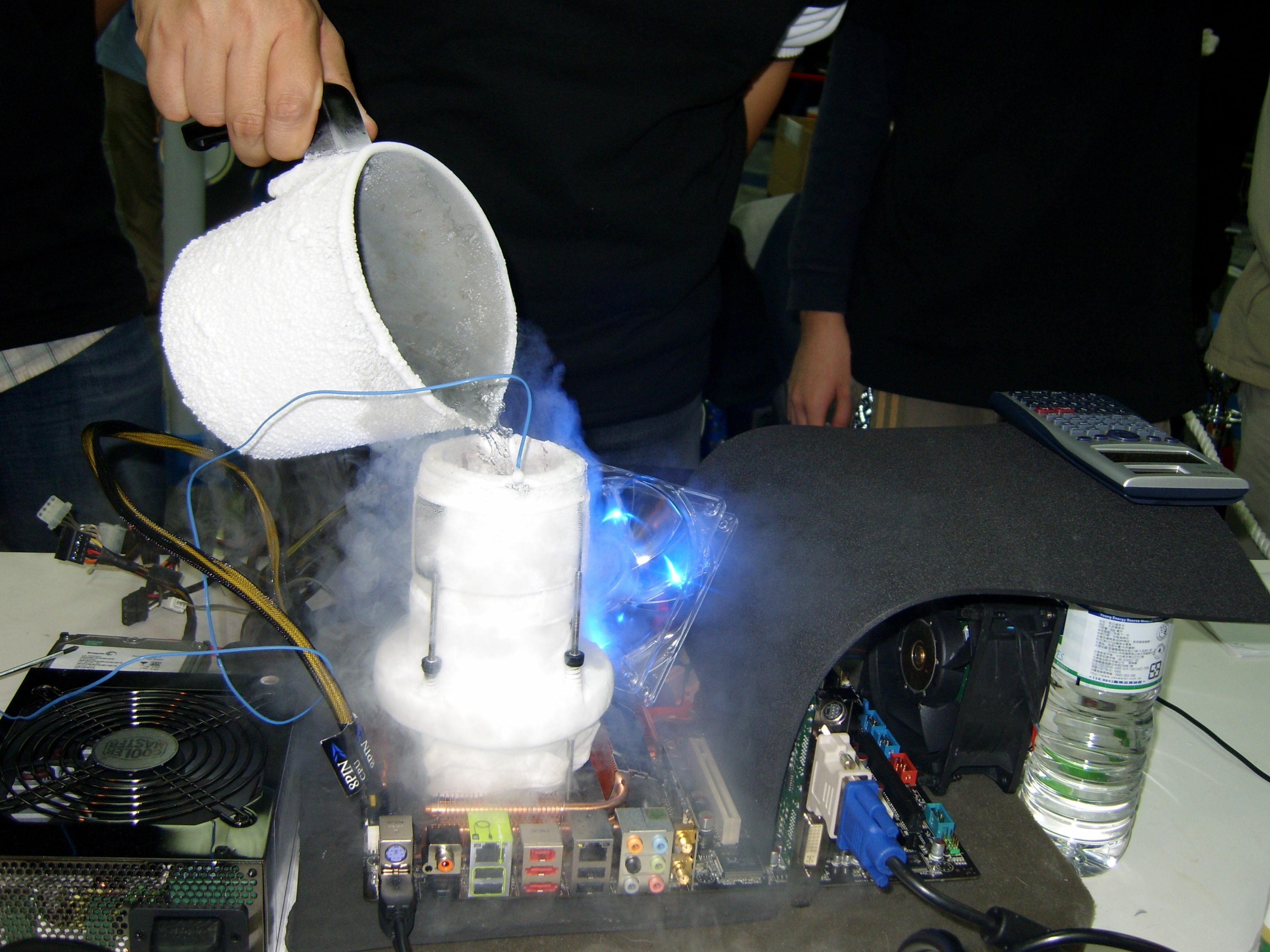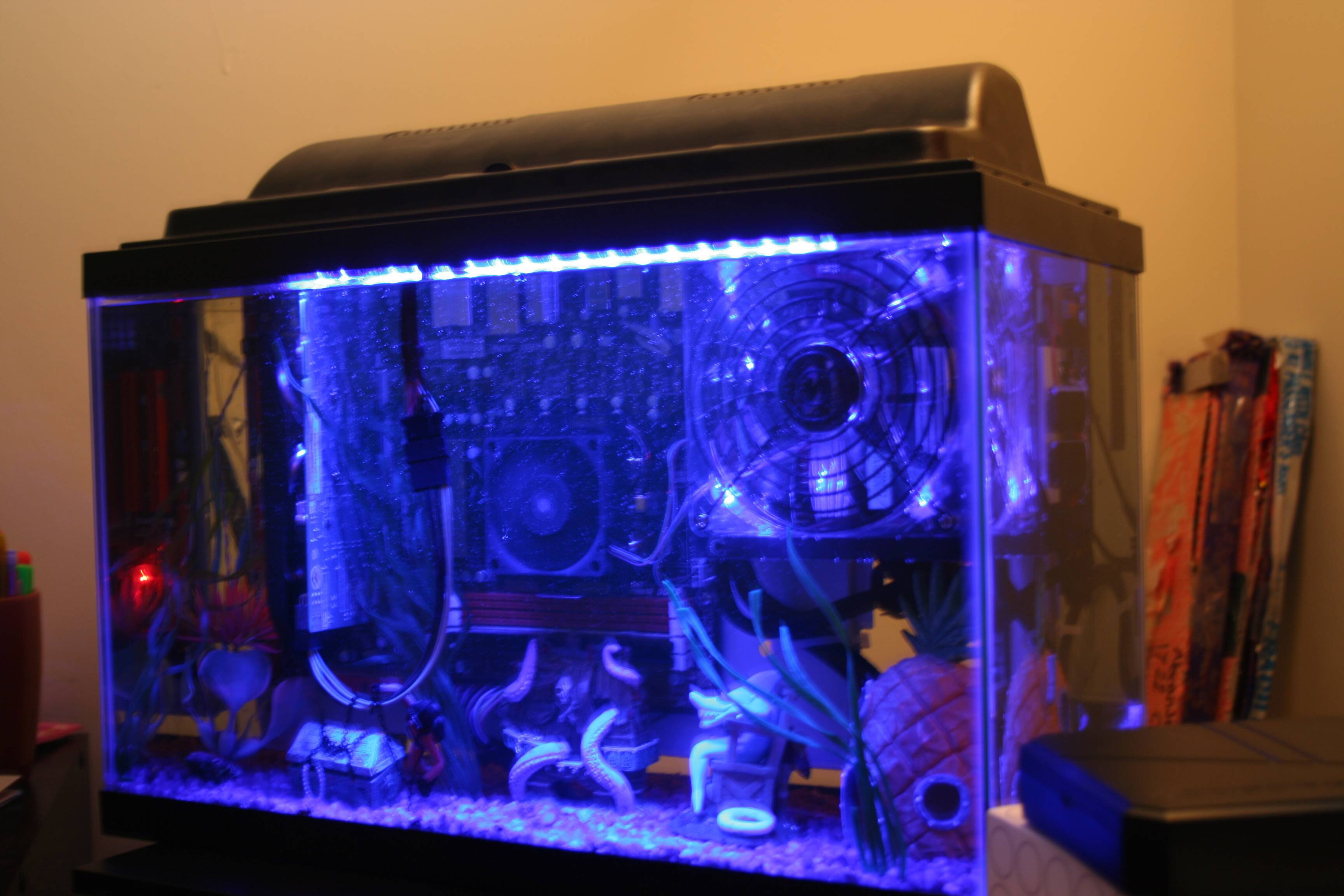Extreme PC cooling has been around for years. Apart from water cooling the rest has been reserved for the elite overclockers and engineers with the exception of a few mainstream phase change units.
Today I am going to be talking about the different types of extreme PC cooling available either on the market or as DIY projects.
Water-cooling

Water cooling is the king of low maintenance 24/7 overclocking setups having gained a strong foothold in the overclocking community as well as with manufacturers with lots of all-in-one units on the consumer market.
CPU Watercooling ranges from the inexpensive to very expensive. Due to the many different kinds of water cooling setups, from AIO cooling units, like the Corsair H100i GTX, which only cost a few hundred dollars at most. To the most insane, multi-thousand dollar setups that water cool every last thing in your PC, water cooling is the best and most practical way to get a good 24/7 overclock.
As water cooling can be quite expensive, or very inexpensive, the main differences between custom water cooling and AIO solutions are performance and ease of setup. With an AIO, you simply need to attach the CPU block, and then the radiator, and you are set to go.
With custom setups, it is much harder and a little more involved to build the loop, but the cooling efficiency increases greatly as do your overclocks.
Custom cpu water cooling is the best way to overclock your daily rig as you can add as many radiators as you can fit, as well as have incredibly low temperatures compared to similar AIO setups.
TEC / Peltier
Rarely seen solo, thermoelectric cooling aside from cooling processors is a technology commonly seen in small refrigerators and works using the Peltier effect:
The Peltier effect is the presence of heating or cooling at an electrified junction of two different conductors and is named after French physicist Jean Charles Athanase Peltier, who discovered it in 1834. When a current is made to flow through a junction between two conductors A and B, heat may be generated (or removed) at the junction.
TEC modules have two sides, a hot side and a cold side. TEC cooling works by transferring heat from one side of the module to the other, the more you cool the hot side, the colder the cold side gets allowing you to pump more voltage through your chip. It’s not uncommon for temperatures to reach negative figures on the cold side although that rarely translates to core temperatures. TEC CPU Cooling is slightly more effective than water cooling, however, to get the most performance out of TEC cooling its best used in conjunction with a water cooling loop.
For the cooling provided, TEC cooling drains a lot of power resulting in higher bills.
Phase Change
Phase change works very much the same as your fridge or freezer. By compressing a refrigerant gas into liquid form, which then passes through a condenser where it cools before being sent to the evaporator head attached to the CPU. CPU Phase change cooling is the only known way of cooling to sub-zero temperatures 24/7 with little to no attention apart from initial insulation.
Temperatures can range from -5*c to -150*c depending on the experience of the person building the unit, gas used and current load. Some phase change units are suited to 24/7 usage as long as you take care when insulating the board.
Water Chiller Variation
Another variation that incorporates phase change CPU cooling is a water chiller.
Water chillers are reasonably cheap to make from second-hand parts and does not require that much time to make as long as you have an existing water cooling setup. It works very much the same as phase change but instead, the evaporator is placed into a coolant that has a much lower freezing temperature than water where it is then pumped over components via the water cooling loop.
While you most likely won’t see negative figures, you will be able to cool to sub-ambient case temperatures allowing to you to get to the closer side of zero degrees Celsius at the core. Liquid temperatures can easily reach minus thirty-three degrees celsius.
Liquid Nitrogen (LN2) / Dry ICE

LN2 and Dry Ice cooling are single-handedly the best possible way to get the most INSANE overclocks from your processor or GPU although very short-lived.
This method of cooling is by far the most extreme, and sometimes can be very dangerous but allows for mind-boggling overclocking! Taking a CPU from 3.5 GHz to 8.8 Ghz is amazing. This type of feat can only be reached with LN2. That being said, LN2 and Dry ice are both hard to use and require very special hardware to use such a specialist CPU pot.
LN2 / Dry Ice is not the kind of thing that you do as a main 24/7 rig because of the amount of attention required, but rather as a hobby or a job.
LN2 and Dice cooling, however, is possibly the most fun, yet hardest way to overclock. If you get good at it, you may be in the running to become a professional overclocker!
Submerged Mineral Oil

Some of you may have heard of this type of cooling before, with aquarium mods and people like Luke from LinusMedia Group doing this type of cooling. In a nutshell, Submerged Oil cooling uses a non-reactive, non-conductive mineral oil to submerge your PC components in.
Mineral oil cooling functions much the same way as water cooling, but Submerged Oil cooling takes heat dissipation to another level. By surrounding your PC components in oil, you eliminate the issues of uneven heat dissipation. This means rock-solid stability for all your PC components, not just parts of them.
While mineral oil does keep temperatures stable, it’s not nearly as effective as water. Because Mineral oil has a high heat capacity, it also means that when it does reach the radiator it will take longer to cool.
In short, submerged oil computers are more about looks than extreme overclocking, there’s nothing mineral oil can do that water can’t do better and in the long cleaner and cheaper.





